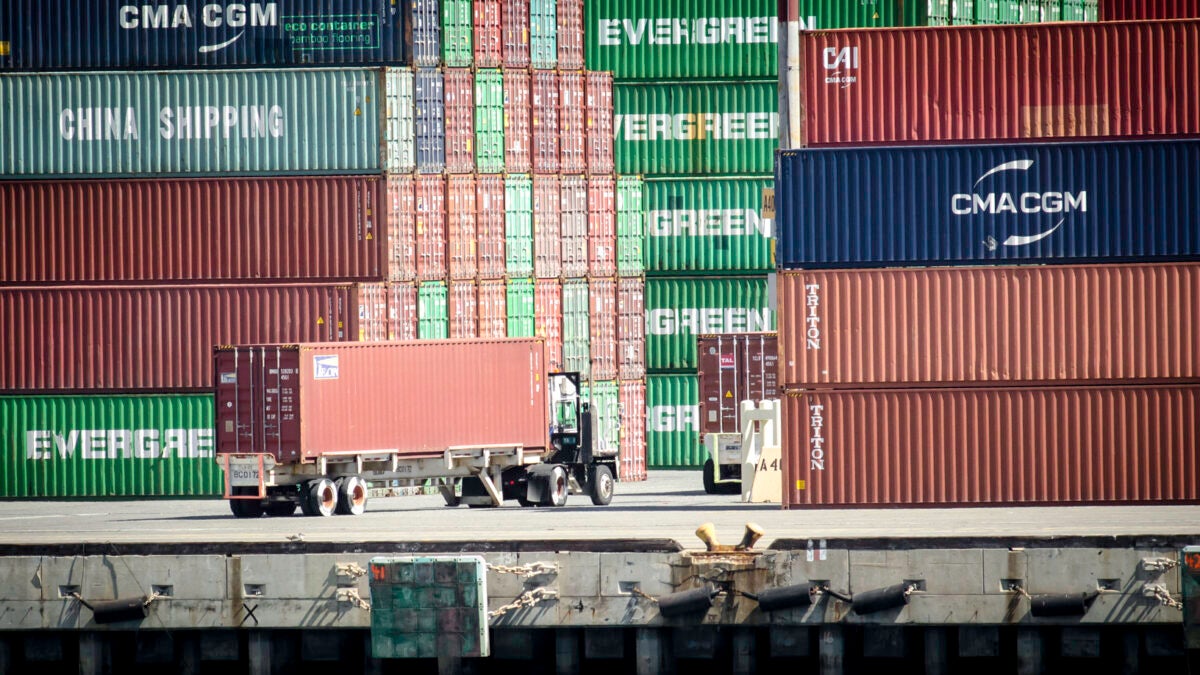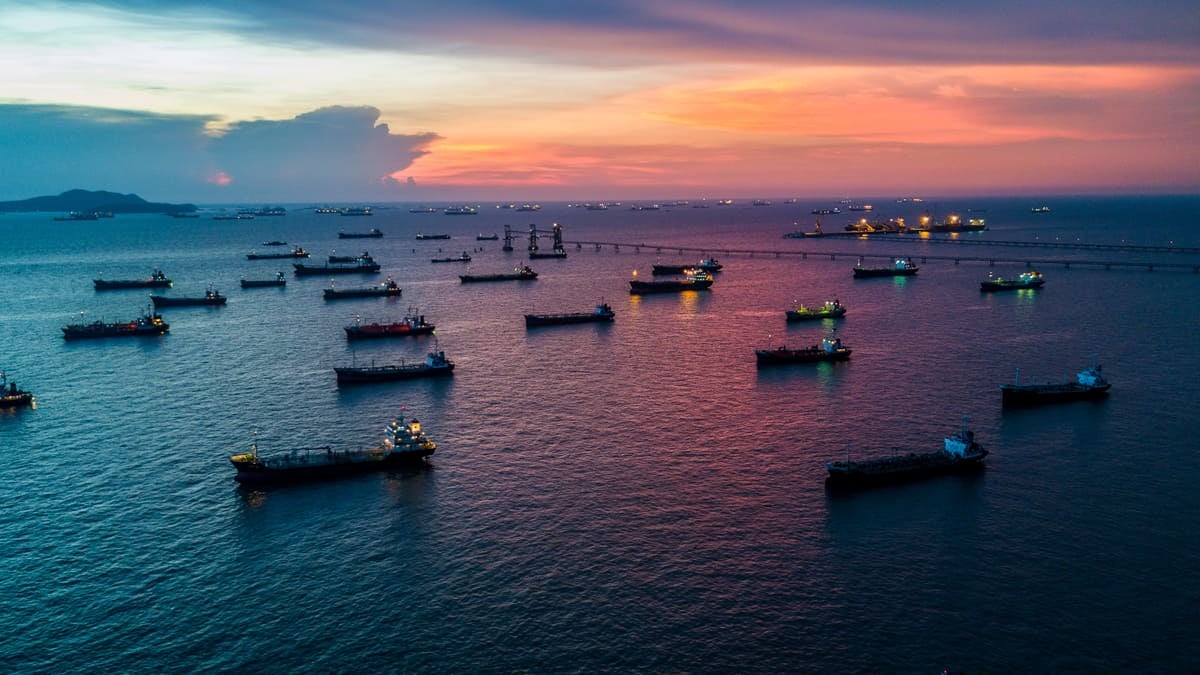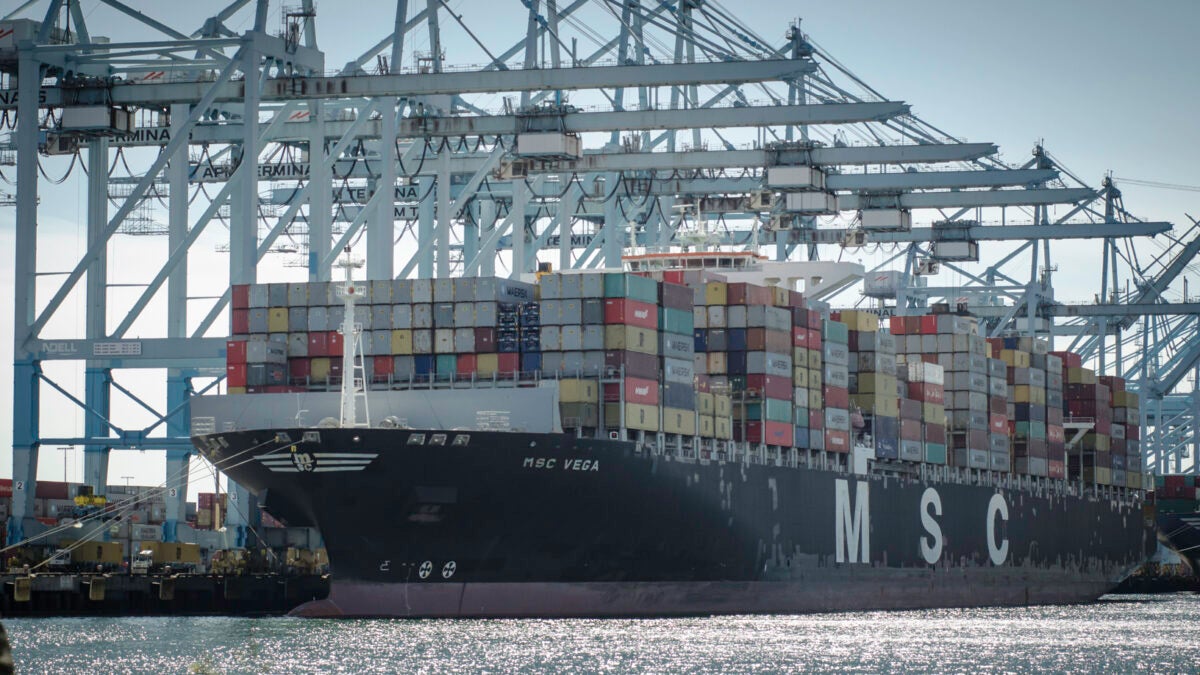This is the question I am asked on a daily basis. The issue is very complex, so I usually quip with a surprising response: “They’ve always had issues, but no one was really paying attention.” Turns out, unless the person works in freight, they are very unsatisfied with this answer. After all, freight and products just seemed to automatically show up before, but that is no longer the case.
Anyone who has been around supply chains knows that there have always been issues and challenges. Weather, economic cycles, capacity, pricing fluctuations, labor strikes, war, terrorism, policy changes, etc. have been with us since trade first began, and those issues (and others) have always been a part of managing cargo flows. But 2021 is something much bigger. Why is that?
The simple answer is there is a sudden and massive surge of demand that far outweighs the market’s capacity. The global supply chain infrastructure that exists simply can’t handle the volume of products flowing through the economy. The root cause is the extraordinary government stimulus that has stimulated demand.

As the money flowed from the government, it ended up in the hands of consumers and businesses that spent it. The transfer of money coincided with a shift in consumer demand from purchasing services to purchasing physical products. This caused the United States to race through trillions of dollars of inventory while domestic and global production was shut down.
Simply stated, production was shut down while the U.S. economy went into demand overdrive. As production came back online, the manufacturing sector responded by fulfilling an unprecedented backlog of orders.
China ramped up manufacturing and products started to flow again. And the volumes were much bigger than before. Every container ship was put to work to move the cargo across the oceans. However, ports were built to handle a certain volume and each port has a finite number of cranes and space to store containers. When the ports became flooded with cargo, they simply didn’t have the capacity to handle it. A lack of labor, trucks, warehouse capacity and rail infrastructure all started to create significant supply chain challenges in handling the surge of cargo.
Ships have been piling up off the coasts in ever-increasing numbers, and this is taking that capacity offline as the ports try to handle it.

And this is not just an issue in the United States. It also exists in China. In fact, as I write this, the coastal cities of China have four times as many ships sitting off the coast as the Pacific ports in the United States do.
The oceans are also just one part of the story. To get freight to American consumers, it must go through an intricate system – shifting from port to other modes of transportation. This may include dozens of touch points in the domestic freight network, all of which are vulnerable to their own choke points.
Once a cargo shipment reaches U.S. docks, it may go from truck to rail to truck to distribution center back to truck and dozens of sorting facilities in between before you receive it. Most of the capacity constraints in the domestic market have been labor-related, i.e., not enough workers at the distribution centers or drivers in the trucks. Trucking companies and warehouse operators have tried to respond by jacking up wages but are finding that isn’t solving their employment challenges.
Trucking has the most challenging labor picture of all: It simply is a job of last resort for many people. When construction, retail, food service, gig economy and warehousing are all competing with the trucking industry for labor, it is often the trucking industry that loses.
After all, the lifestyle for an over-the-road driver is unique and difficult. Being forced to stay away from home for three weeks at a time is a major turn-off for many.
Truck driving is hard work and often the only recourse carriers have to attract more drivers is more money. But with alternative employment offering similar pay packages – but not requiring someone to stay away from home for weeks at a time, trucking companies are finding that new would-be drivers are not coming into the market in the numbers needed.
The challenges don’t end there. Warehouses and distribution centers have their own labor issues along with space constraints.
In the industrial sector, the supply chain issues that are causing chaos for retailers are also keeping domestic manufacturers from being able to complete the production of their products. This is most obvious in the automotive industry. This has an additional knock-on effect of restricting truck capacity. Even if labor supply weren’t a major factor in the trucking industry, the carriers wouldn’t be able to get their hands on new trucks to handle the freight supply. Simply said, there aren’t enough trucks and trailers on the road to handle all of the demand.
Will the supply chain issues end soon? Very unlikely.
Even if we solve for current demand on the oceans, at the ports, in the distribution centers and in the trucking industry, we haven’t begun to discuss what happens when the government ramps up additional domestic spending. While most supply chain professionals would agree that investing in infrastructure is the right thing to do, the worry is that it will continue to compound the imbalances between supply and demand across the supply chain.
As domestic manufacturing ramps up to handle the building of new roads, bridges and other physical construction projects, this will put a massive onslaught of freight on the market. It will also pull labor out of the trucking industry, which will further exacerbate the driver shortage. Construction jobs will become more valuable, as contractors try to handle the surge of new projects. In turn, this will drive wages higher and increase economic growth.
For transportation providers, the good news is that it appears that we have a long way to go before the market catches up with demand. This could go on for a few years and break the typical three-year boom-and-bust cycle. For shippers and supply chain professionals who pay for capacity, while the work has never been more challenging, the rewards have also never been greater. Managing supply chains is no longer a back-office function, largely ignored and taken for granted. Going forward, business survival will require a highly functioning supply chain run by professionals with the experience and instincts to respond.
Embrace it.











Freight expediting LLC
#1 Reason…. OVER REGULATION … It’s pushed out so many drivers and is a big reason behind the SHORT career average in the industry. The Regulations and Enforcement (DOT) Treat you like criminals with almost every ridiculous encounter and totally ridiculous violations that the general public motorists would never stand for… Then you have their stupid computer telling you when to sleep and forcing you to work when you’re tired. No parking to sleep.. no restrooms to relive yourself, blah blah blah… NO THANK YOU !!
SuperGenius
When the govt pays people more to stay home ya have to ask yourself why?
Im just waiting for the world to burn down but it hasn’t happened yet, why?
There is an ever powerful force that keeps the balance even though there are some who just like to see fires.
ILIKESTOCKS
We know several things
1st) the writer of this article could never be honest, the ramifications would put a big ol bulls eye on his head from the powers that be.
2) It took years for this latest Psychological Operation to be implemented and this was just another phase of control. Everyone makes money at certain intervals.
3) There has always been disaster economics in play. The United States citizens were not all forced to play in the past as much as this one.
4) The typical US Citizens is brainwashed from birth and incredibly stupid. But it’s not their fault in way, because in order to break out of the typical thinking you have to not mind being different, and people hate to be different. Although there are several advantages to being on the outside. Clear thinking is one of them.
5) Promotion of fear 24/7 is counter to what is needed in an emergency situation which is common knowledge, therefore constant fear mongering would lead a thinking person to analyze why they would be directed in such a manner, and hopefully come to a conclusion that its for gain of control.
6) This will end when that long shoreman bill in congress ends which should be 2023.
7) In conclusion: Nature seeks balance. Even radiation from an unstable isotope is seeking to release alpha, beta or gamma particles. And eventually it stops and becomes inert which is balance. Unfortunately we live in a world of deceptive beings. They seek to control and bring pain and suffering to people. They choose to hide in the shadows and use actors in order to create an event or catalyst. Its just the way it is. Nature good, people bad I believe history shows us that and you really dont have to go very fsr from the present to see the consequences. Use the deception to your advantage. Nothing is forever, stay positive but don’t be naive.
Eric Kierstead
Excellent article! Very objective analysis of what’s transpired, and what will continue to cause Supply Chain woes for at least another year.
Bernard
When spending on infrastructure, do we cement our status as a third-tier import dependent economy?
Don Starr
Big shout to the train crews at PHL and BNSF and the Yellow armour UP. Working 12 hour days and back and their 10 hour rest.
Keep up the good work people.
John Gaudet
This may be the best description of what happened, is happening, and will happen I have come across.
Eric Kulisch
Everyone should read. Very informative.